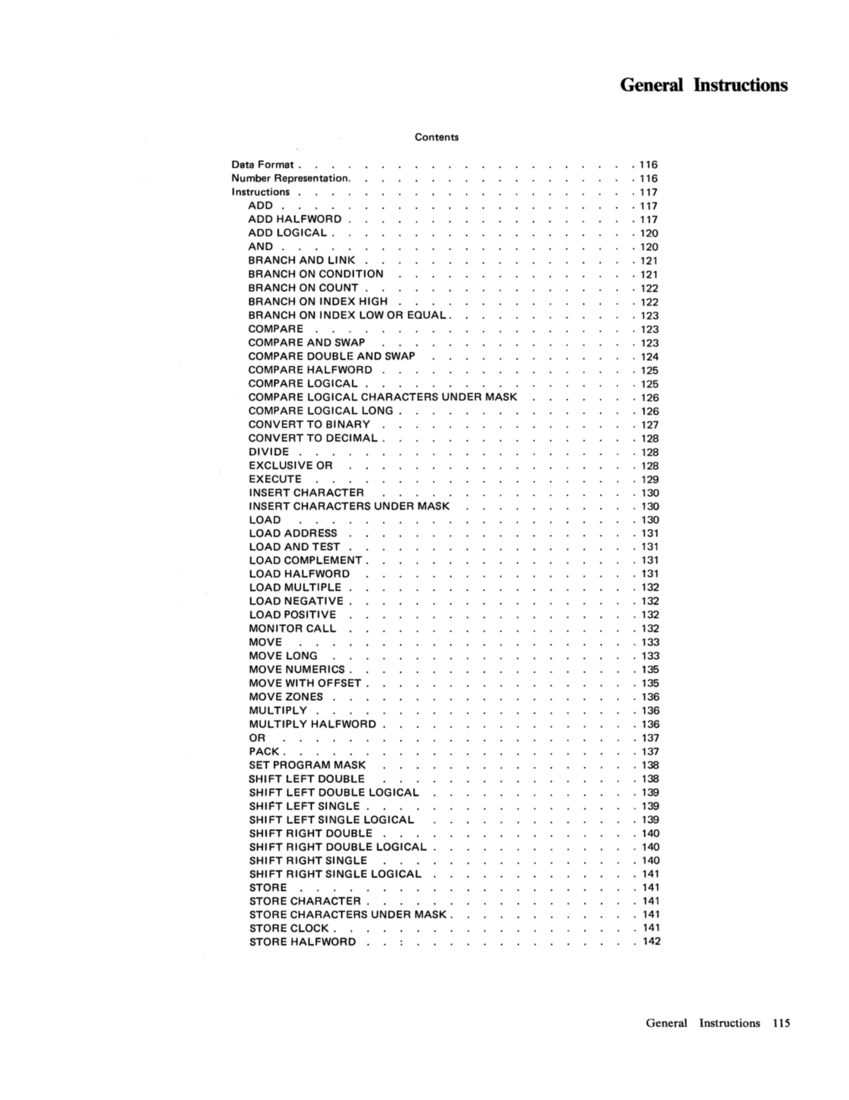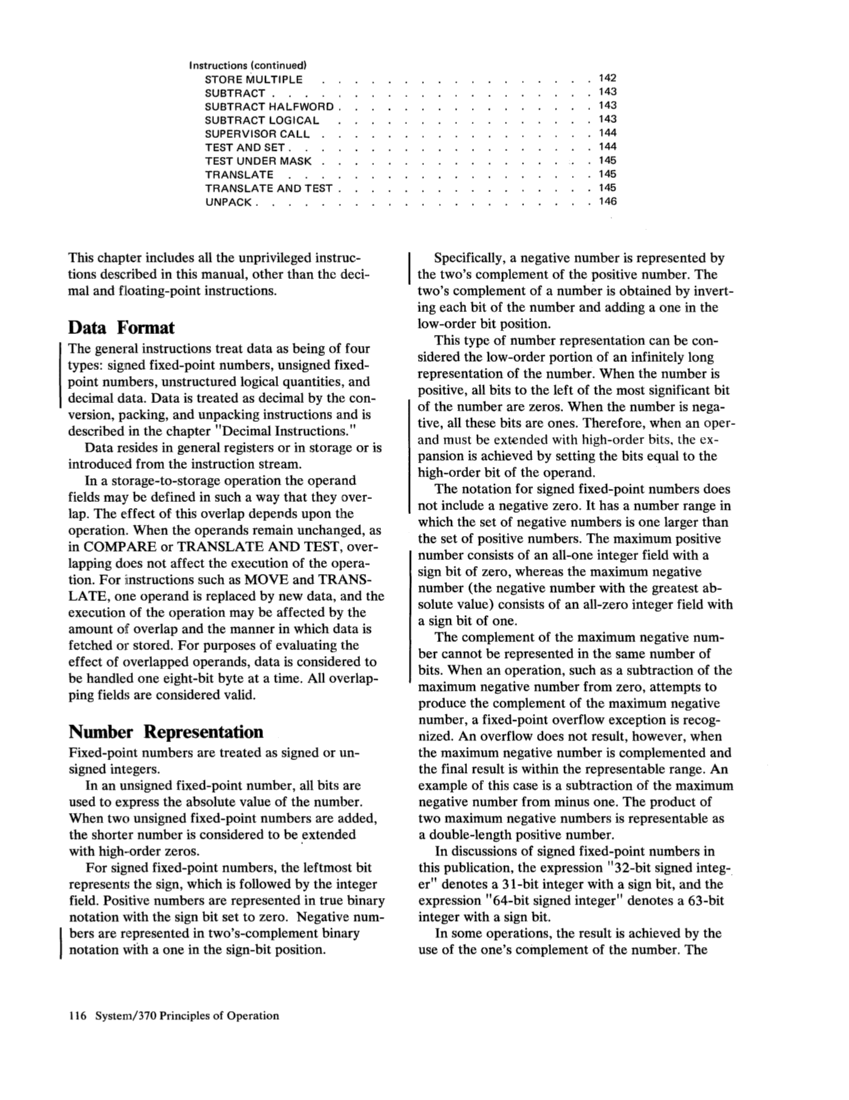Data Format.
Number Representation.Instructions .
ADD.
ADDHALFWORD ADD LOGICAL. AND.
BRANCH ANDLINI< BRANCH ON CONDITION BRANCH ON COUNT .
BRANCHON INDEX HIGH Contents
BRANCHON INDEX LOW OR EQUAL. COMPARE . COMPARE AND SWAP COMPARE DOUBLE AND SWAP COMPARE HALFWORD . COMPARE LOGICAL . COMPARE LOGICAL CHARACTERS UNDER MASK COMPARE LOGICAL LONG. CONVERT TO BINARY . CONVERT TO DECIMAL. DIVIDE . EXCLUSIVE OR EXECUTE INSERT CHARACTER INSERT CHARACTERS UNDER MASK LOAD LOAD ADDRESS . LOAD AND TEST . LOAD COMPLEMENT. LOAD HALFWORD LOAD MULTIPLE . LOAD NEGATIVE. LOAD POSITIVE MONITOR CALL MOVE MOVE LONG MOVE NUMERICS. MOVE WITH OFFSET. MOVE ZONES . MULTIPLY. MULTIPLY HALFWORD OR PACK. SET PROGRAM MASK SHIFT LEFT DOUBLE SHIFT LEFT DOUBLE LOGICAL SHIFT LEFT SINGLE. SHIFT LEFT SINGLE LOGICAL SHIFT RIGHT DOUBLE . SHIFT RIGHT DOUBLE LOGICAL SHIFT RIGHT SINGLE SHIFT RIGHT SINGLE LOGICAL STORE . STORE CHARACTER. STORE CHARACTERS UNDER MASK. STORE CLOCK. STORE HALFWORD .
General Instructions· 116 · 116 · 117 · 117 · 117 · 120 · 120 · 121 · 121 · 122 · 122 · 123 · 123 · 123 · 124 · 125 · 125 · 126 · 126 · 127 · 128 · 128 · 128 · 129 · 130 · 130 · 130 · 131 · 131 · 131 · 131 · 132 · 132 · 132 · 132 · 133 · 133 · 135 · 135 · 136 · 136 · 136 · 137 · 137 · 138 · 138 · 139 · 139 • 139 · 140 · 140 · 140 141
141
141
141
141
142
General Instructions 115
Number Representation.
ADD.
ADD
BRANCH AND
BRANCH
BRANCH
General Instructions
141
141
141
141
142
General Instructions 115










































































































































































































































































































































